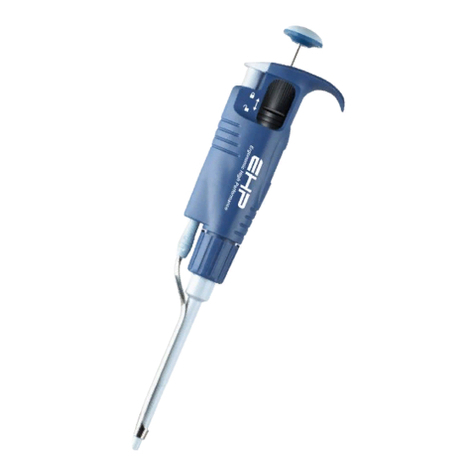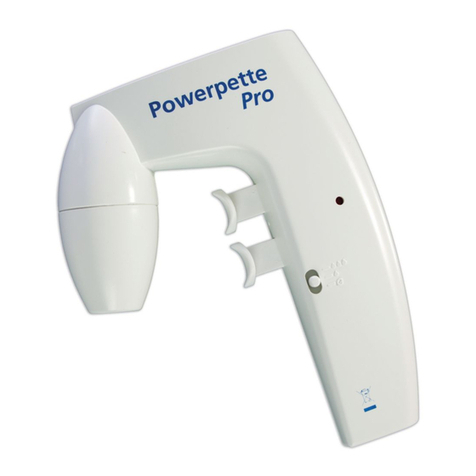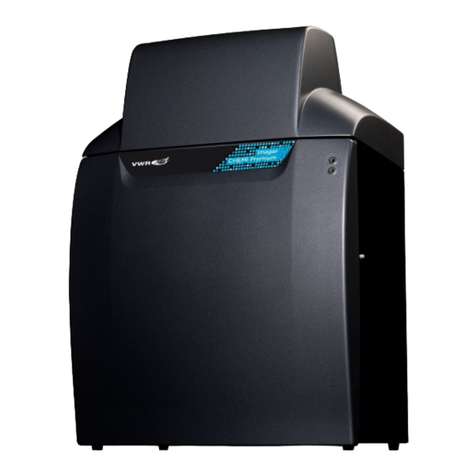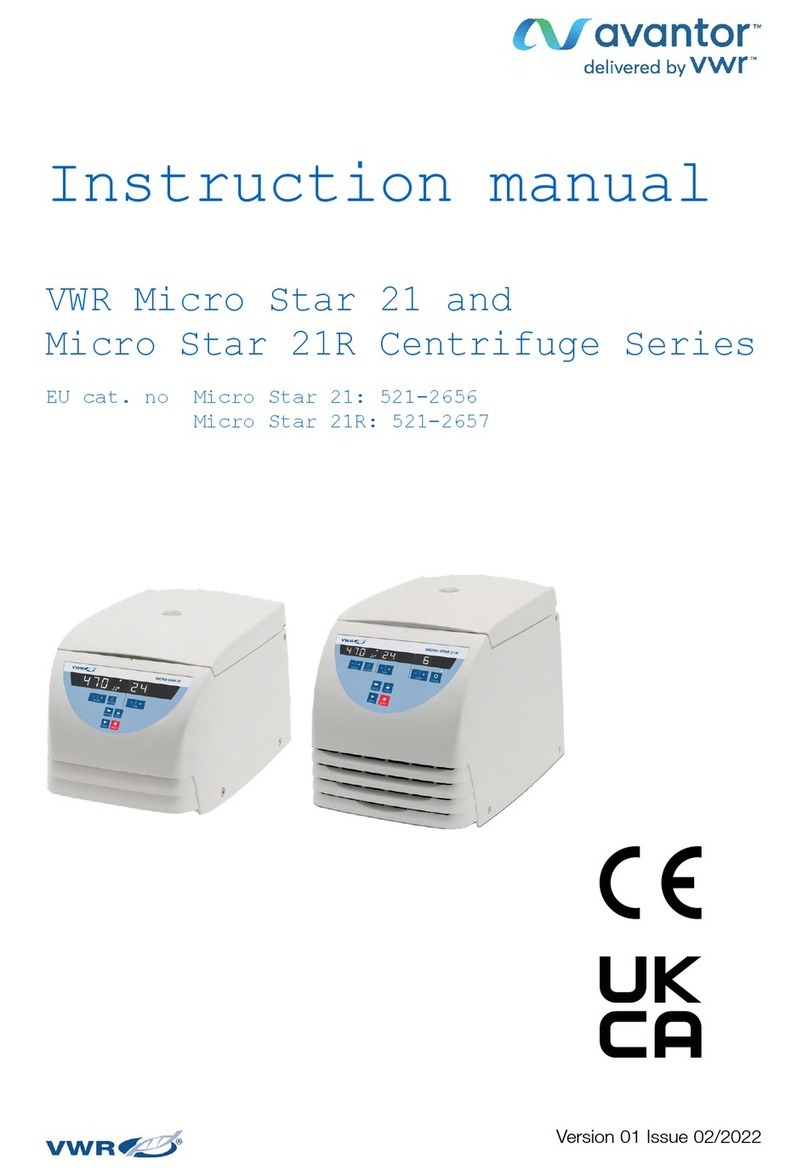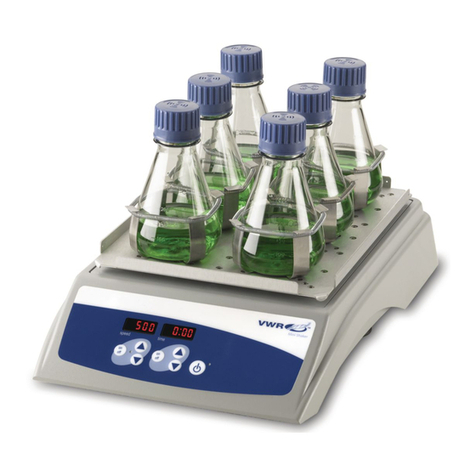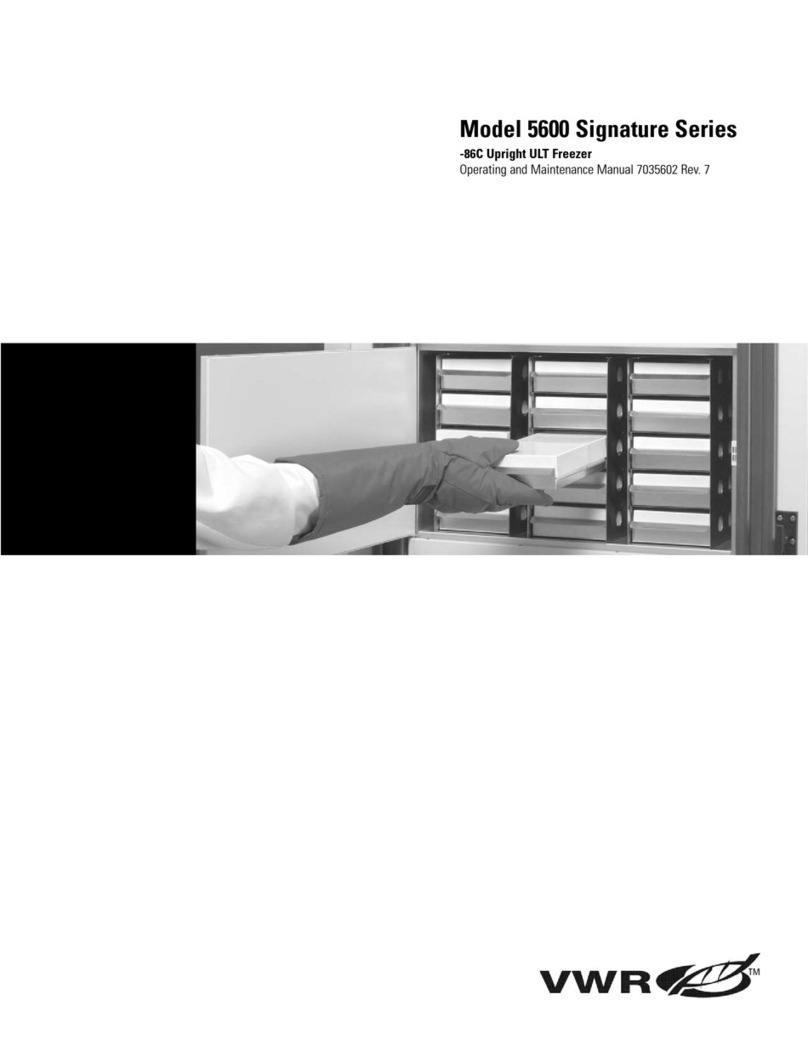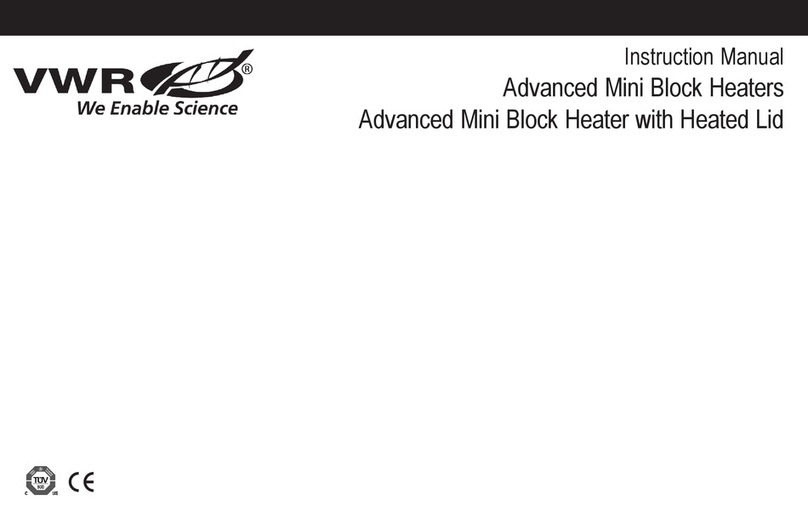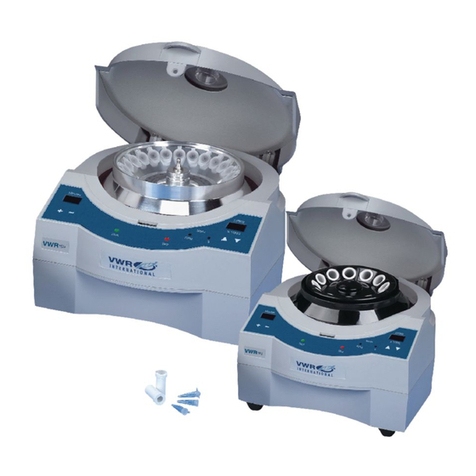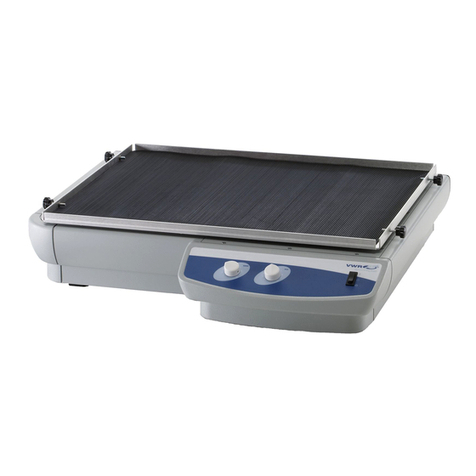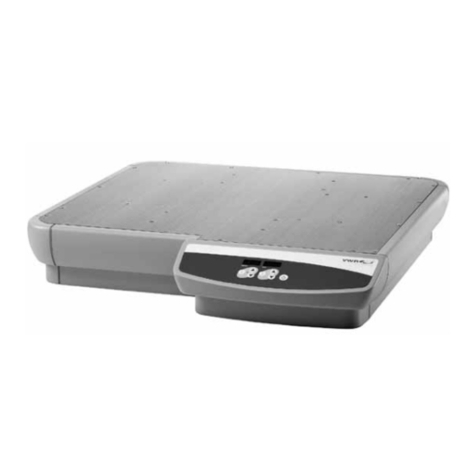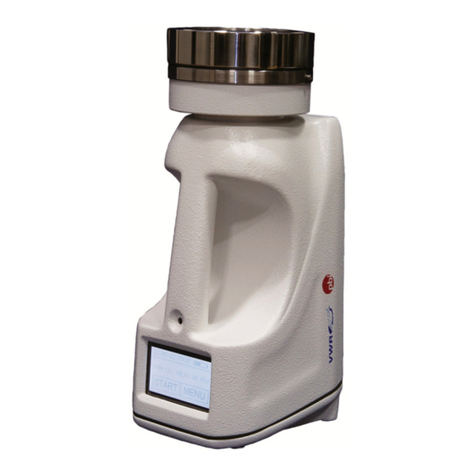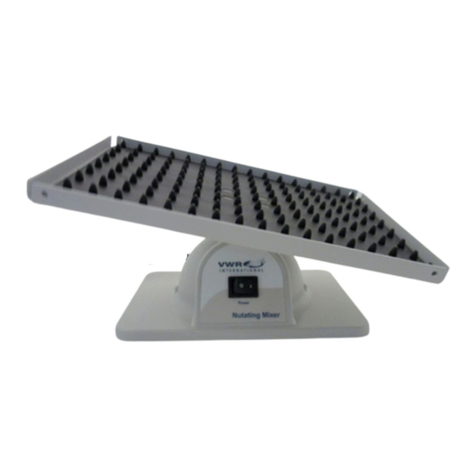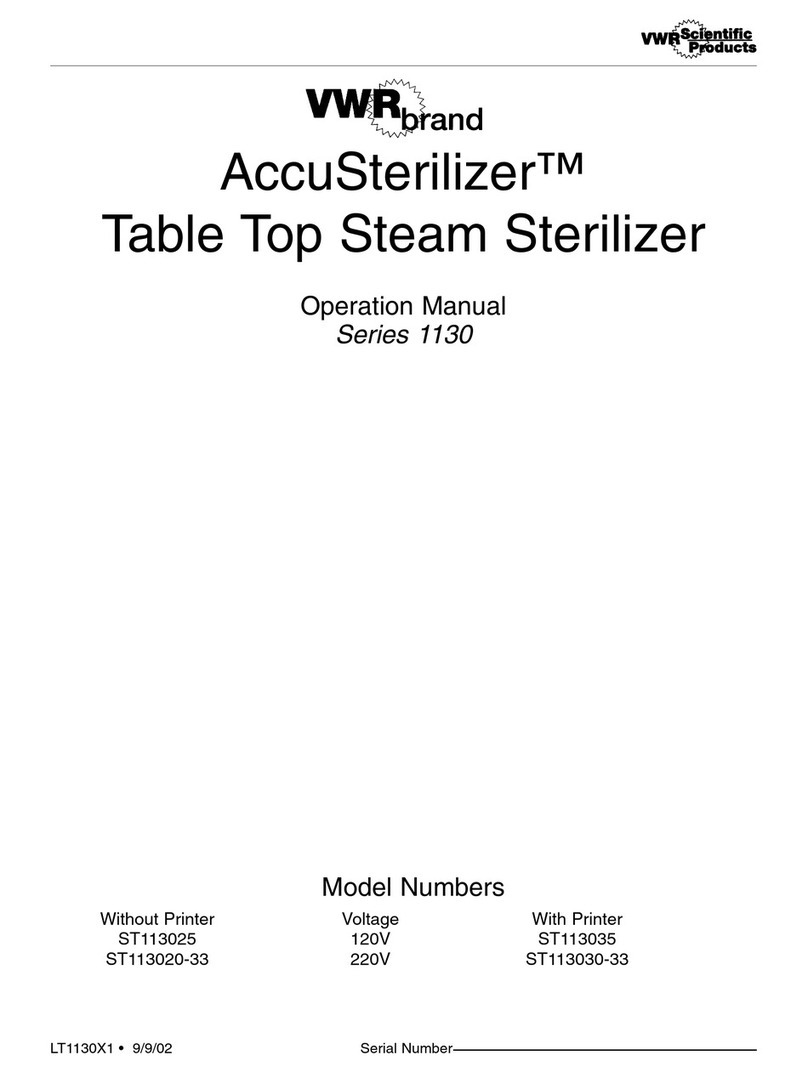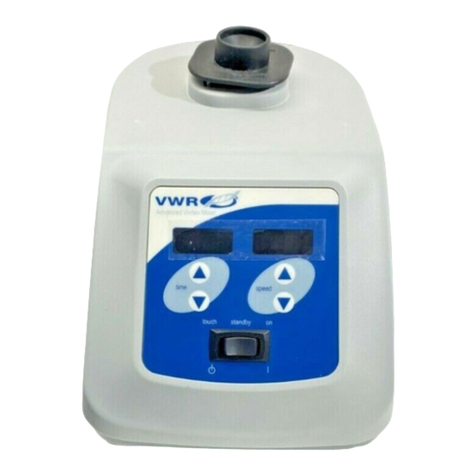
Bulletin TI-H2PD-L1466 Installation, Operation, and Maintenance
VWR Hydrogen Generators
Bulletin TI-H2PD-L1466
VWR Model 89209-862
and 89209-864 Hydrogen
Generators
10
To maximize the life of the palladium membrane, the VWR Hydrogen Generator should be
run continuously. If the hydrogen generator must be shut down for short periods of time (e.g.,
overnight), leave the power switch in the “on” position, and move the hydrogen output switch
to the “OFF” position. Shutting the unit down in this manner will minimize water and energy
consumption.
The hydrogen delivery pressure may be adjusted using the pressure
adjust knob located beneath the access panel on the top of the generator (see Figure 4).
During pressure adjustment, LCD display will show the pressure setting and the “Set Pres-
sure” message will be displayed. After approximately 20 seconds of pressure adjustment, the
digital pressure display will automatically switch to display the actual system pressure, and the
message will change to “Output Pressure”.
The hydrogen outlet valve is controlled by a switch located beneath the ac-
cess panel on the top of the generator. To open the outlet valve and initiate ow, simply press
the switch to the “AUTO” position. While operating in the “AUTO” position, the hydrogen out-
let valve will remain open. If a fault in the operation of the system occurs, a system diagnostic
message will show on the front panel and the hydrogen valve will be automatically controlled.
For temporary shutdowns, move the switch to the “OFF” position. When the switch is closed
in this manner, the generator will maintain its internal pressure. The valve should remain in
the “AUTO” position for normal operation. The “ON” position will override the controls to allow
for troubleshooting.
Set the hydrogen pressure adjust knob to the desired output pressure and set the hydrogen
output switch (see Figure 2) to the “AUTO” position. The solenoid valve will then open. Using
a ow controller or needle valve, set the warmup ow to 80-85% of the total generator capac-
ity. Open the downstream vent valve(s) to purge the lines (see Figure 5). Hydrogen output
will begin approximately 10 minutes after powering the unit on, and will increase to its rated
capacity and purity in 2 to 4 hours. Over this period of time, the cell will warm up and all pip-
ing will be purged to prepare for high purity hydrogen delivery.
After the generator has warmed up (2 hours minimum) and the lines have been purged,
connect the piping to the instrument or process which requires high purity hydrogen. Allow
pressure to build in the line before initiating ow through the instrument or process. The digi-
tal pressure displayed slowly increases until the hydrogen lines reach the set pressure. The
amount of time required to ll the line is dependent on the length and diameter of the piping
used.
The quality of the delivered hydrogen gas depends on the cleanliness of the delivery
lines and accessories, both internal and external to the Parker Balston Hydrogen Generator.
Leaks, traces of moisture, air, reducible oxides, and other contaminants must be ushed out
of the system before the purity of the delivered hydrogen meets specications.
On a regular basis, monitor the water level and operational status. After the
initial 48 hours of operation, ll the generator with deionized water ,
on an as needed basis, lling until the level indicator on the front panel is at or slightly beyond
the “WATER FULL” level. Monitor the hydrogen consumption of the down-
stream equipment to ensure ow is within the capacity of the generator (i.e., 150 cc/min. for
the 89209-862, and 300 cc/min. for the 89209-864).
It is not unusual for a faint mist to vent from the generator vent port during operation.
If there is a power interruption during operation, the generator will power up with the hydro-
gen output valve switch in the "ON" position when power is restored. If the built-in system
diagnostics trigger a fault message, consult the Troubleshooting and Service section of this
manual for further instructions.

